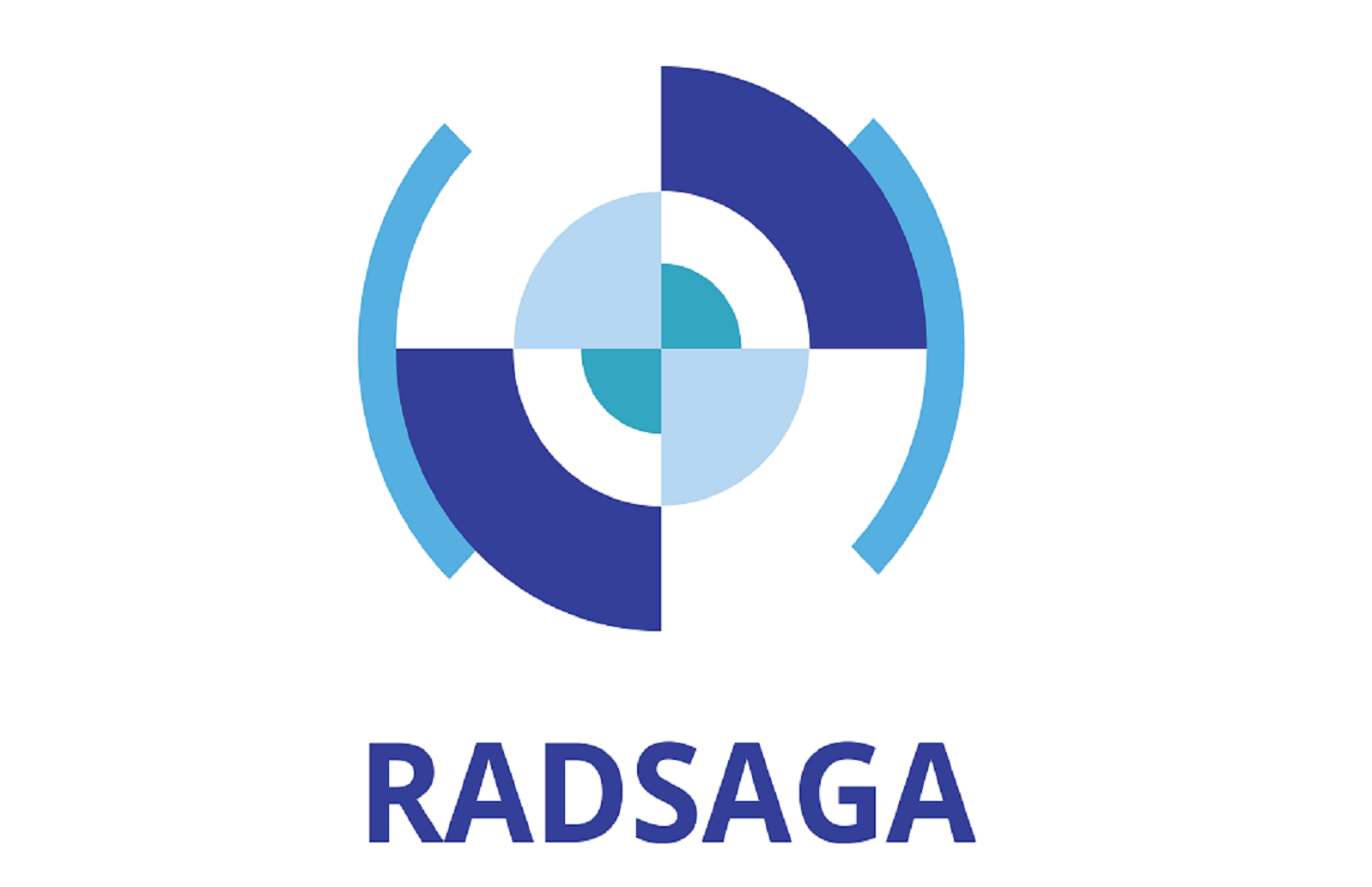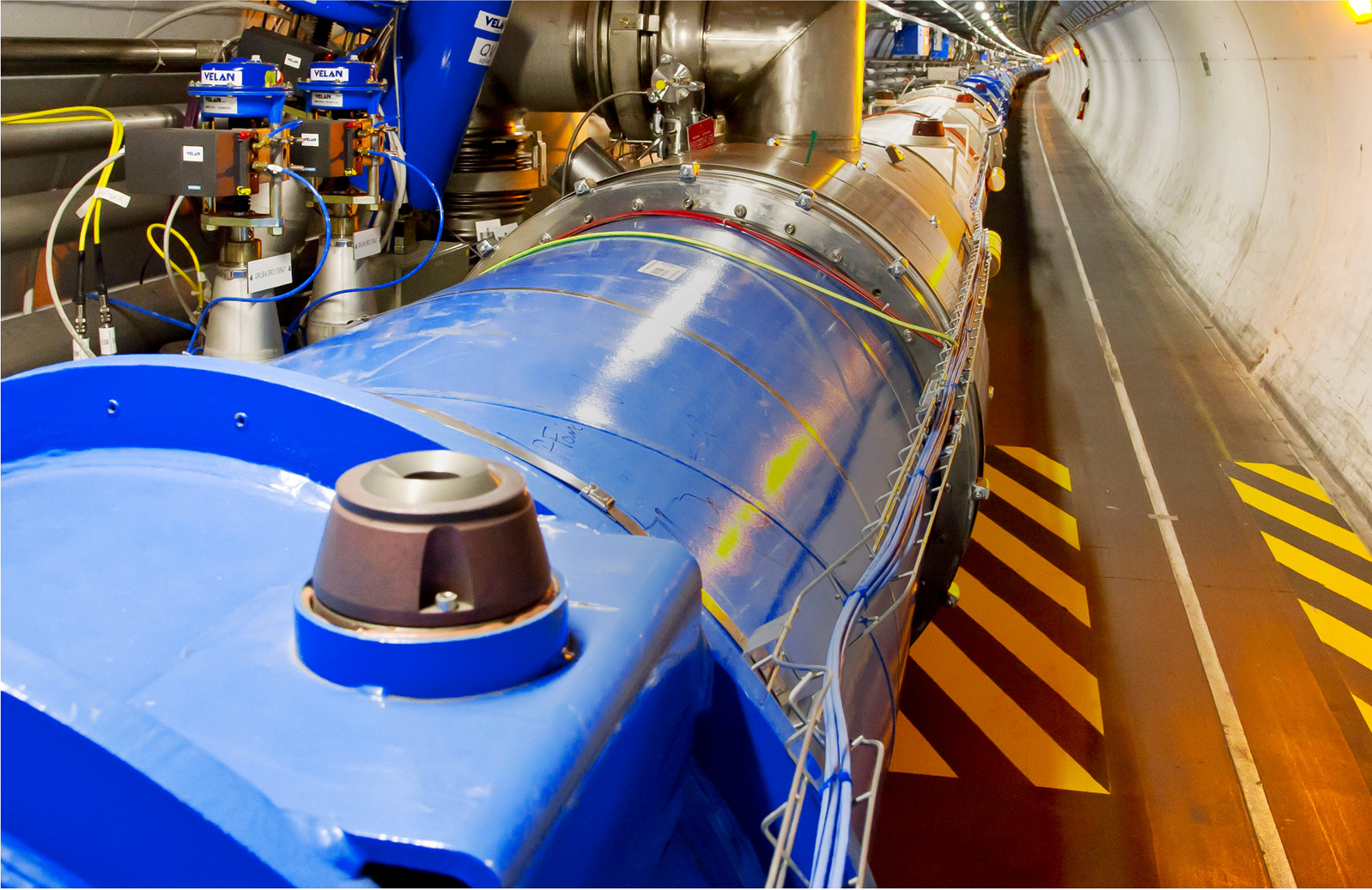First RADSAGA ESRs defended their PhD
At the end of 2020, four RADSAGA ESRs defended their PhDs at the University of Montpellier, France. They are Kimmo Niskanen (ESR7), Ygor Aguiar (ESR9), Tomasz Rajkowksi (ESR12) and Israel da Costa Lopes (ESR13). Congratulations for this great achievement! Read more about their stories below.
ESR7 – Kimmo Niskanen
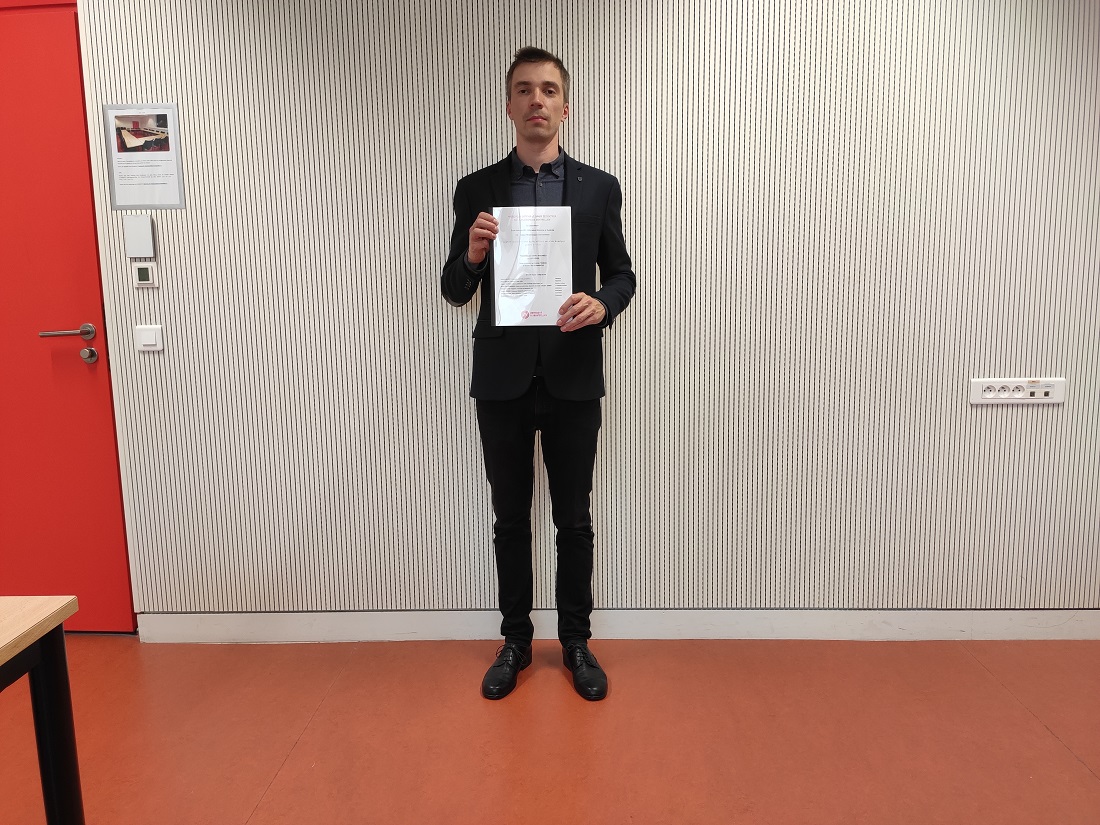
Semiconductor power devices such as power diodes and power transistors are in the core of the power supply systems. Historically, silicon (Si) has been the dominant semiconductor material in power electronics since the beginning. Due to trends of increasing efficiency and decreasing size of the electronic components and systems, silicon has reached its performance limits. Therefore, there is a need for designing new materials as a replacement for silicon in power electronic devices.
In recent years, the power electronics industry has been rapidly evolving thanks to wide bandgap (WBG) semiconductor materials such as silicon carbide and gallium nitride. WBG devices are starting to become more commercially available, however, those are still relatively recent materials in power semiconductor devices. There are still some technological barriers, which need to be overcome to ensure reliable operation throughout their lifetime in harsh environments.
Therefore, realized within the RADSAGA project, the objective of ESR7 study was to determine a test methodology for radiation and aging effects on Commercial-off-the-shelf (COTS) WBG power devices. Kimmo studied the long and short term reliability of such devices in radiation environments through experimental analysis and through simulations considering three interdependent lines of research: 1) the degradation of the device due to radiation, 2) the effect of device aging on its radiation sensitivity and 3) the effect of radiation on the long term reliability of the device. To complete his study, first steps were taken towards system level study by developing a simple power switching converter in order to see how a partially failed device affects the system performance.
Kimmo obtained his PhD degree from Université de Montpellier (UM) in the RADIAC team under supervision of Antoine Touboul from UM and Rosine Coq Germanicus from UNICAEN. According to Kimmo, he greatly benefited from the wide expertise of the RADSAGA network. Kimmo is continuing his research activities as a post doctoral researcher in the University of Jyväskylä.
ESR9 - Ygor Aguiar
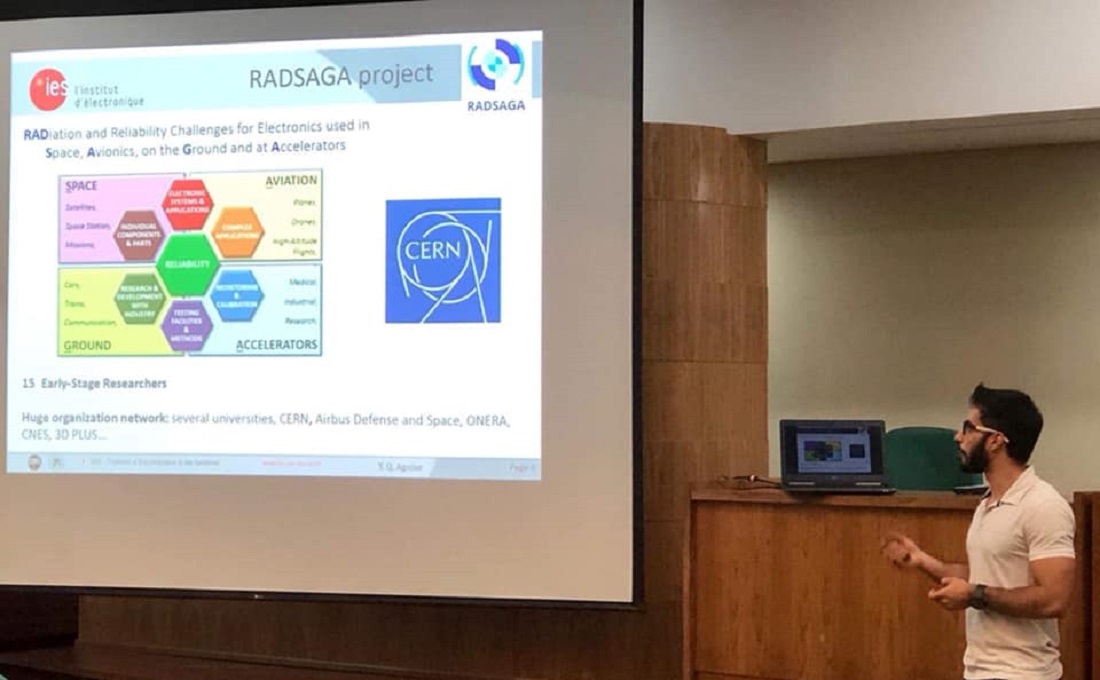
Given the importance of understanding the reliability of circuits early in the design phase, our fellow Ygor Aguiar (ESR9) has focused on studying prediction methodologies to evaluate the susceptibility of digital circuits to Single-Event Transient (SET) and Single-Event Upset (SEU). Accordingly, a multi-physics and multi-scale simulation chain was proposed during the project and used to investigate novel hardening strategies at design level, i.e. Radiation-Hardening-by-Design (RHBD) techniques [1]. For instance, the physical layout design influences the main Single-Event Effects (SEE) generation mechanisms induced by a particle strike. Hence, hardening approaches are proposed to reduce the overall charge collection process, such as the transistor folding layout coupled with diffusion splitting presented in [2].
At circuit-level, the main goal is to improve the masking effects usually achieved by means of a redundant scheme. However, Ygor has also investigated the impact of logic synthesis of cell-based designs and concluded that, despite the reduction in area and power consumption, the usage of complex-logic gates suppresses the inherent logical masking capability of combinational circuits implemented with basic logic gates and can increase the overall sensitivity of the circuit [3].
Additionally, he identified a great input dependence on the sensitivity of digital circuits and on the efficiency of the RHBD techniques. Thus, signal probability was proposed as an application-specific hardening approach in order to improve the hardening efficiency of different techniques while reducing the design drawbacks and, very importantly, to avoid misleading qualifications. For instance, a pin assignment optimisation targeting SET effects was proposed which can provide the reduction on the overall SET rate of a digital circuit without any area overhead [4]. Similarly, he has shown that selective TMR block insertion methodologies can be optimised based on the signal probability of the critical nodes and the input dependence of the majority voter architectures [5].
Ygor has developed his work primarily in the Université de Montpellier and Aix-Marseille Université with Prof. Frédéric Wrobel and Prof. Jean-Luc Autran. But he has also spent a short period in the research group of Prof. Paul Leroux in the KU Leuven. According to him, the RADSAGA network is composed of highly-qualified professionals in the field of radiation effects who had a crucial role for the development of his thesis. “To work among experts in the field highly contributes to the quality of the discussions and the thesis development,” he affirms. Currently, he is a senior fellow at the European Organisation for Nuclear Research (CERN), in Geneva, Switzerland. His current activities are focused on the assessment of the radiation environments within the Large Hadron Collider (LHC) complex for the application of Radiation Hardness Assurance (RHA) methodologies.
1. AGUIAR, Y. Q., WROBEL, F., AUTRAN, J-L., LEROUX, P., SAIGNÉ, F., POUGET, V., TOUBOUL, A. D., Mitigation and Predictive Assessment of SET Immunity of Digital Logic Circuits for Space Missions, Aerospace, 2020. DOI: 10.3390/aerospace7020012
2. AGUIAR, Y. Q., WROBEL, F., AUTRAN, J-L., KASTENSMIDT, F., LEROUX, P., SAIGNÉ, F., POUGET, V., TOUBOUL, A. D., Exploiting Transistor Folding Layout as RHBD Technique against Single-Event Transients, IEEE Transactions on Nuclear Science, 2020. DOI: 10.1109/TNS.2020.3003166
3. AGUIAR, Y. Q., WROBEL, F., AUTRAN, J-L., LEROUX, P., SAIGNÉ, F., TOUBOUL, A. D., POUGET, V., Impact of Complex-Logic Cell Layout on the Single-Event Transient Sensitivity, IEEE Transactions on Nuclear Science, 2019. DOI: 10.1109/TNS.2019.2918077
4. AGUIAR, Y. Q., WROBEL, F., AUTRAN, J-L., LEROUX, P., SAIGNÉ, F., POUGET, V., TOUBOUL, A. D., Reliability-driven pin assignment optimization to improve in-orbit soft-error rate, Microelectronics Reliability, 2020. DOI: 10.1016/j.microrel.2020.113885
5. AGUIAR, Y. Q., WROBEL, F., AUTRAN, J-L., LEROUX, P., SAIGNÉ, F., POUGET, V., TOUBOUL, A. D., Design exploration of majority voter architectures based on the signal probability for TMR strategy optimization in space applications, Microelectronics Reliability, 2020. DOI: 10.1016/j.microrel.2020.113877
ESR12 - Tomasz Rajkowski
With increasing complexity of electronic systems that are launched to space, their radiation qualification becomes more and more challenging. Standard methods of qualification, based on component-level tests, are time- and money-consuming, and there are no standards for system-level tests yet. In this context, Tomasz Rajkowski performed his PhD studies in the 3D-Plus company and University of Montpellier (RADIAC team), developing methodology of system-level qualification of electronic devices, with particular focus on qualification of System-in-Package (SiP) modules from 3D-Plus.
Thanks to the unique possibilities given in the RADSAGA consortium, Tomasz could perform several system-level radiation tests, using heavy ions, Co-60, X-Ray, mixed-field and laser facilities. In these experiments, it was possible to characterize the soft error rate of the system (heavy ions test at GANIL and CHARM mixed-field tests), observe and investigate rare system-level effects (CHARM ultra-high energy heavy ion test, laser test and heavy ions test at UCL [1]), as well as evaluate the TID threshold level for the system and track the failure source for the system (X-ray and Co-60 tests [2]).
Basing on the experiments results and analysis, as well as literature review, Tomasz has presented different opportunities that one may get thanks to the system-level testing, for example: incorporation of the margins given by the system within test results, information about: TID/LET threshold for the system, soft/hard error rate, fault propagation in the system, mitigation techniques efficiency, relative sensitivity of the components, system-level error signatures, complex failure modes, synergistic effects at system level and others. What is probably even more important, he has defined the main limitations for the qualification based on the system-level radiation tests: definition of the worst case configuration for the system and performing test in this configuration(s), constraints in penetration of the high-LET heavy ions, constraints in the observability of the most relevant parameters of the system and irradiation of high enough number of system under test samples.
The complete system qualification, i.e., the one that would overcome all the qualification limitations listed above, is difficult, and therefore, Tomasz proposed limited qualification scenarios. Some of the qualification requirements were relaxed in these scenarios, in order to reduce test effort, but the test results uncertainty is increased. Nevertheless, different applications for both high reliability and New Space missions/products, can draw on these scenarios.
The work was performed in strong collaboration between academia and industry and Tomasz was supported by both the university supervisor (prof. Frédéric Saigné from the University of Montpellier) and company supervisor (Mr. Pierre-Xiao Wang from the 3D-Plus). Results of the study were used as one of the inputs for the RADSAGA system-level test guideline [3].
[1] T. Rajkowski, F. Saigné, V. Pouget, F. Wrobel, A. Touboul, J. Boch, P. Kohler, P. Dubus, and P. X. Wang, Analysis of SET Propagation in a System in Package Point of Load Converter, IEEE Transactions on Nuclear Science, vol. 67, no. 7, pp. 1494– 1502, July 2020.
[2] T. Rajkowski, F. Saigné, K. Niskanen, J. Boch, T. Maraine, P. Kohler, P. Dubus A. Touboul and P. X. Wang, Analysis of system level TID test results of a System in Package Point of Load converter, NSREC2020 conference, Santa Fe, December 2020 (work submitted to IEEE Transactions on Nuclear Science, under review).
[3] A. Coronetti, R. Garcia Alia, J. Budroweit, T. Rajkowski, I. Da Costa Lopes, K. Niskanen, D. Soderstrom, C. Cazzaniga, R. Ferraro, S. Danzeca, J. Mekki, F. Manni, D. Dangla, A. Koelpin, V. Pouget, F. Saigne, P. X. Wang, A. Touboul, A. Javanainen, H. Kettunen, R. Germanicus, RHA through System Level Testing: Risk Acceptance, Facility Requirements, Test Methodology and Applications, NSREC2020 conference, Santa Fe, December 2020 (work submitted to IEEE Transactions on Nuclear Science, under review).
ESR13 - Israel da Costa Lopes
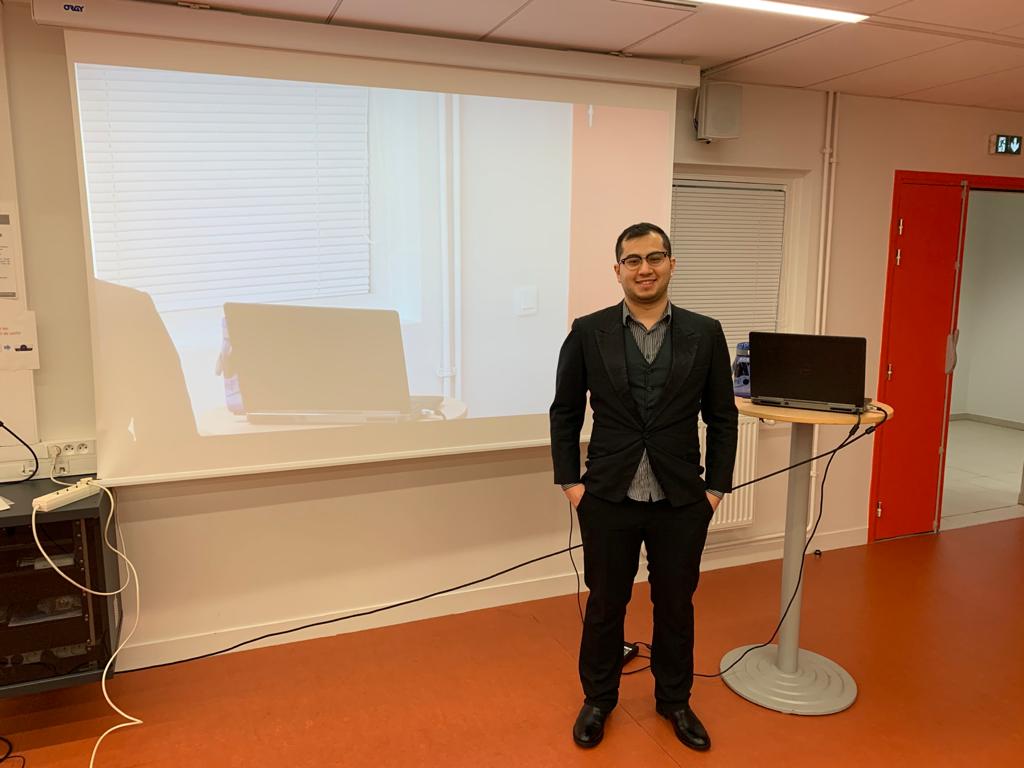
The classical Radiation Hardness Assurance (RHA) methodologies are based on the radiation response of the components of a system. However, that approach is time consuming and expensive, being prejudicial for cost-sensitive companies such as the aerospace industry. Therefore, the emerging system-level methodology has been proposed in order to reduce the costs associated to long beam times, sample preparation and component-specific test bench design. Thus, the objective of the ESR13 was to develop a bridging methodology from component to system-level in order to re-use component-level data, tools and knowledge, and facilitate the cultural transition to the system-test methodology.
First, he developed a representative application of aerospace applications on two recent System-on-Module (SoM) technologies in order to characterize them at system level. Regarding Single Event Effects (SEE), he investigated the influence of adding embedded code instrumentation for increasing the observability of the final application irradiated at system-level with 184 MeV protons [1].
Regarding Total Ionizing Dose (TID), it is possible to find a great amount of memory-related data on the literature, however there is a lack of results on recent complex components such as System-on-chips (SoCs). To this extent, Israel compared the timing degradations of two recent SoC technologies by using localized X-ray irradiation [2]. That work provided an important feedback for FPGA designers working on highly-constrained applications.
Finally, he developed a bridging RHA methodology from component to system level in order to analyze the radiation effects of digital systems, presented in [3]. The methodology emphasizes the importance of adding software or Intellectual Property (IP) core instrumentation for increasing the observability of system-level experiments. Additionally, he also raised the importance of performing fault injection, such as laser fault injection, in order to improve the precision of root cause analysis and the system reliability prediction.
During his PhD defense, the jury praised the amount of experimental data presented in his work and the domain of the subject. He affirmed: “I could perform several radiation experiments thanks to RADSAGA. Beam time is rare and expensive, therefore the RADSAGA project gave me the rare opportunity of participating of several collective radiation campaigns in high-level European facilities”. He complements: “The trainings and workshops provided by the RADSAGA network were essential for building and spreading my knowledge in radiation effects as well as showing me the challenges faced in industries such as Airbus, Intel and 3DPlus”. Currently, he is interested in positions as scientific researcher and radiation effects engineer on both industry and academy.
1. I. C. LOPES, V. POUGET, F. WROBEL, A. TOUBOUL, F. SAIGNÉ and K. ROED "Development and evaluation of a flexible instrumentation layer for system-level testing of radiation effects," 2020 IEEE Latin-American Test Symposium (LATS), Maceio, Brazil, 2020, pp. 1-6, DOI: 10.1109/LATS49555.2020.9093681.
2. I. C. LOPES, V. POUGET, K. ROED, F. WROBEL, A. TOUBOUL, F. SAIGNÉ, J. BOCH, and T. MARAINE. “Comparison of TID-induced Degradation of Programmable Logic Timings in Bulk 28nm and 16nm FinFET System-on-Chips under Local X-ray Irradiation", poster presented at NSREC 2020.
3. I. C. LOPES, V. POUGET, F. WROBEL, F. SAIGNÉ, A. TOUBOUL, and K. ROED. “Bridging RHA methodology from component to system-level applied to System-on-Modules", RADECS 2020 (in-press).

